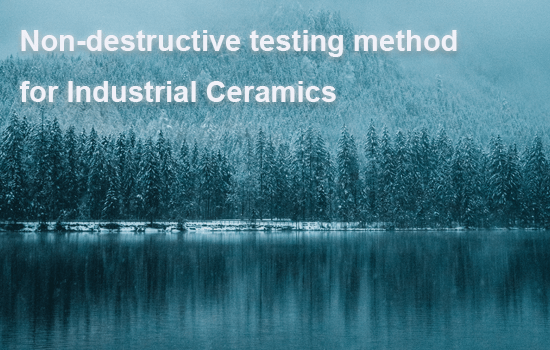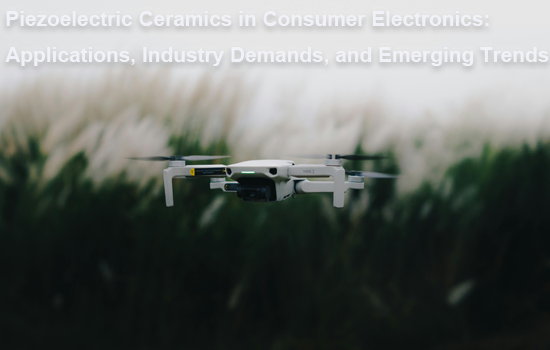Last Updated on 20 апреля, 2023 by You Ling
Industrial ceramics have physical and mechanical properties such as high hardness, high wear resistance, corrosion resistance, and high-temperature resistance. They have been widely used in cutting-edge fields such as aerospace equipment. The processing of industrial ceramic products is complex, and each process may create defects that affect performance. Therefore, it is necessary to use highly sensitive testing methods to comprehensively detect micro-defects in ceramic materials. Non-destructive testing (NDT) evaluates material integrity and continuity without changing the usage performance of the object being tested. It detects inherent defects and their shape, location, and size, making it suitable for detecting defects in engineering ceramics that have low processing efficiency and high cost. Alumina ceramics and zirconia ceramics are outstanding oxide ceramics in industrial ceramic applications.- Liquid Penetrant Testing (PT)
- Ultrasonic Testing Technique (UT)
- Microfocus X-ray Inspection Technique
- Laser Ultrasonic Testing Technique
- Infrared Thermal Imaging Detection Technology
- Acoustic Emission Testing Technology
- Industrial CT Technology (ICT)
- Case Study of Aluminum Oxide Ceramic CT Inspection by He-Shuai Company.
 2、Ultrasonic Testing Technique (UT)
Ultrasonic testing uses ultrasonic waves to propagate in elastic media, and detects internal or surface/subsurface defects in materials by the characteristics of reflection, refraction, and so on at interfaces. Currently, artificial intelligence, laser technology, digital signal processing, neural networks, and fracture mechanics knowledge are being combined with ultrasonic testing to evaluate the strength and remaining life of ceramic products.
2、Ultrasonic Testing Technique (UT)
Ultrasonic testing uses ultrasonic waves to propagate in elastic media, and detects internal or surface/subsurface defects in materials by the characteristics of reflection, refraction, and so on at interfaces. Currently, artificial intelligence, laser technology, digital signal processing, neural networks, and fracture mechanics knowledge are being combined with ultrasonic testing to evaluate the strength and remaining life of ceramic products.
 The working principle of ultrasonic waves is mainly based on their propagation characteristics in the specimen:
2.1 An ultrasonic wave is generated by a sound source and is introduced into the specimen in a certain way.
2.2 The ultrasonic wave propagates through the specimen and interacts with the specimen material and its defects, causing its propagation direction or characteristics to be changed.
2.3 The changed ultrasonic wave is received by a detection device and can be processed and analyzed.
2.4 Based on the characteristics of the received ultrasonic wave, the presence and characteristics of defects within the specimen can be evaluated.
3、Microfocus X-ray Inspection Technique
The focal size of conventional industrial X-ray equipment is 1-4 mm, with 0.2-0.5 mm referred to as small focus, and the industrial microfocus range is 0.05-0.001 mm. Compared to conventional X-ray imaging equipment, microfocus X-ray imaging systems have higher defect recognition capabilities.
The working principle of ultrasonic waves is mainly based on their propagation characteristics in the specimen:
2.1 An ultrasonic wave is generated by a sound source and is introduced into the specimen in a certain way.
2.2 The ultrasonic wave propagates through the specimen and interacts with the specimen material and its defects, causing its propagation direction or characteristics to be changed.
2.3 The changed ultrasonic wave is received by a detection device and can be processed and analyzed.
2.4 Based on the characteristics of the received ultrasonic wave, the presence and characteristics of defects within the specimen can be evaluated.
3、Microfocus X-ray Inspection Technique
The focal size of conventional industrial X-ray equipment is 1-4 mm, with 0.2-0.5 mm referred to as small focus, and the industrial microfocus range is 0.05-0.001 mm. Compared to conventional X-ray imaging equipment, microfocus X-ray imaging systems have higher defect recognition capabilities.
 The comparison between traditional X-ray photography and microfocus imaging is that the large focal point of the X-ray source, the graininess of the film, or the spots on the fluorescent screen can lead to a decrease in image clarity and contrast, limiting the amount of information obtained. However, microfocus technology can obtain more image details through image projection magnification.
Microfocus X-ray can detect cracks as small as 10 μm within ceramic materials, but the direction of crack propagation should be consistent with the direction of the X-ray beam.
4、Laser Ultrasonic Testing Technique
The method of using lasers to generate ultrasonic waves can be divided into two categories: direct and indirect. The direct method is to directly interact the laser with the tested material to excite ultrasonic waves through thermal-elastic effects or ablation effects. The indirect method is to use other materials surrounding the tested material as a medium to generate ultrasonic waves.
Laser ultrasonic testing uses non-contact laser interferometers to receive ultrasonic waves, which can be remotely controlled over long distances and are highly resistant to interference. This technique can accurately detect the location and size of surface defects in engineering ceramic materials and has good detection capabilities for internal cracks and pores.
The comparison between traditional X-ray photography and microfocus imaging is that the large focal point of the X-ray source, the graininess of the film, or the spots on the fluorescent screen can lead to a decrease in image clarity and contrast, limiting the amount of information obtained. However, microfocus technology can obtain more image details through image projection magnification.
Microfocus X-ray can detect cracks as small as 10 μm within ceramic materials, but the direction of crack propagation should be consistent with the direction of the X-ray beam.
4、Laser Ultrasonic Testing Technique
The method of using lasers to generate ultrasonic waves can be divided into two categories: direct and indirect. The direct method is to directly interact the laser with the tested material to excite ultrasonic waves through thermal-elastic effects or ablation effects. The indirect method is to use other materials surrounding the tested material as a medium to generate ultrasonic waves.
Laser ultrasonic testing uses non-contact laser interferometers to receive ultrasonic waves, which can be remotely controlled over long distances and are highly resistant to interference. This technique can accurately detect the location and size of surface defects in engineering ceramic materials and has good detection capabilities for internal cracks and pores.
 5、Infrared Thermal Imaging Detection Technology
Infrared testing is based on Planck's law of thermal radiation, scanning the surface of the object for temperature differences caused by defects to determine the location of surface or internal defects. Engineering ceramic materials require high-temperature sintering to become dense and hard. Infrared testing technology can control and grade ceramic quality during the powder sintering stage. In ceramic non-destructive testing, infrared technology combined with a scanning imaging system can inspect defects in silicon nitride turbine blades, detecting small cracks on the surface of about 100μm. Infrared thermography detection technology has the potential to quickly detect area defects in ceramic materials, with a high success rate in detecting micro-defects. Its application prospects are very broad. However, in the future, issues such as the influence of the workpiece surface, background radiation, and the size and depth of defects on detection sensitivity must be addressed, and the interpretation of the corresponding temperature recording curve requires professional knowledge.
5、Infrared Thermal Imaging Detection Technology
Infrared testing is based on Planck's law of thermal radiation, scanning the surface of the object for temperature differences caused by defects to determine the location of surface or internal defects. Engineering ceramic materials require high-temperature sintering to become dense and hard. Infrared testing technology can control and grade ceramic quality during the powder sintering stage. In ceramic non-destructive testing, infrared technology combined with a scanning imaging system can inspect defects in silicon nitride turbine blades, detecting small cracks on the surface of about 100μm. Infrared thermography detection technology has the potential to quickly detect area defects in ceramic materials, with a high success rate in detecting micro-defects. Its application prospects are very broad. However, in the future, issues such as the influence of the workpiece surface, background radiation, and the size and depth of defects on detection sensitivity must be addressed, and the interpretation of the corresponding temperature recording curve requires professional knowledge.
 6、Acoustic Emission Testing Technology
Acoustic emission testing determines the location information and real-time activity of the acoustic emission source by receiving the sound signals emitted by the formation and growth of internal cracks in ceramic materials when subjected to stress. It is mainly used for online monitoring of the dynamic extension process of internal defects in ceramic materials, predicting the service life and quality assessment of ceramics.
6、Acoustic Emission Testing Technology
Acoustic emission testing determines the location information and real-time activity of the acoustic emission source by receiving the sound signals emitted by the formation and growth of internal cracks in ceramic materials when subjected to stress. It is mainly used for online monitoring of the dynamic extension process of internal defects in ceramic materials, predicting the service life and quality assessment of ceramics.
 Unlike metal materials, the use of acoustic emission testing for ceramic materials requires consideration of the attenuation of sound signals, especially the attenuation of sound emission signals in different directions and the rules of sound velocity changes. The size of material defects will affect the strength of acoustic emission signals, and environmental and detection equipment noise will also interfere with the sensor. Solving these problems can bring better development for acoustic emission testing.
7、Industrial CT Technology (ICT)
Industrial CT uses high-energy radiation to scan the workpiece to obtain tomographic projection data. Through image reconstruction algorithms, tomographic images are reconstructed, which is regarded as the best non-destructive testing method. The advantages of industrial CT include spatial and density resolution of less than 0.5%, high imaging size accuracy, not limited by the type and geometry of the workpiece material, and the ability to generate three-dimensional images of material defects. Industrial CT has great potential for research and application in the accurate measurement of engineering ceramic structure size, material uniformity, microporosity rate, and detection of overall microcracks, inclusions, pores, and abnormally large grains.
Unlike metal materials, the use of acoustic emission testing for ceramic materials requires consideration of the attenuation of sound signals, especially the attenuation of sound emission signals in different directions and the rules of sound velocity changes. The size of material defects will affect the strength of acoustic emission signals, and environmental and detection equipment noise will also interfere with the sensor. Solving these problems can bring better development for acoustic emission testing.
7、Industrial CT Technology (ICT)
Industrial CT uses high-energy radiation to scan the workpiece to obtain tomographic projection data. Through image reconstruction algorithms, tomographic images are reconstructed, which is regarded as the best non-destructive testing method. The advantages of industrial CT include spatial and density resolution of less than 0.5%, high imaging size accuracy, not limited by the type and geometry of the workpiece material, and the ability to generate three-dimensional images of material defects. Industrial CT has great potential for research and application in the accurate measurement of engineering ceramic structure size, material uniformity, microporosity rate, and detection of overall microcracks, inclusions, pores, and abnormally large grains.
 8、Case Study of Aluminum Oxide Ceramic CT Inspection by He-Shuai Company.
8、Case Study of Aluminum Oxide Ceramic CT Inspection by He-Shuai Company.
Alumina ceramic product map

CT map







